Jesús Bobadilla
Testing Deep Learning Recommender Systems Models on Synthetic GAN-Generated Datasets
Oct 23, 2024Abstract:The published method Generative Adversarial Networks for Recommender Systems (GANRS) allows generating data sets for collaborative filtering recommendation systems. The GANRS source code is available along with a representative set of generated datasets. We have tested the GANRS method by creating multiple synthetic datasets from three different real datasets taken as a source. Experiments include variations in the number of users in the synthetic datasets, as well as a different number of samples. We have also selected six state-of-the-art collaborative filtering deep learning models to test both their comparative performance and the GANRS method. The results show a consistent behavior of the generated datasets compared to the source ones; particularly, in the obtained values and trends of the precision and recall quality measures. The tested deep learning models have also performed as expected on all synthetic datasets, making it possible to compare the results with those obtained from the real source data. Future work is proposed, including different cold start scenarios, unbalanced data, and demographic fairness.
* 10 pages, 7 figures, In press
Comprehensive Evaluation of Matrix Factorization Models for Collaborative Filtering Recommender Systems
Oct 23, 2024Abstract:Matrix factorization models are the core of current commercial collaborative filtering Recommender Systems. This paper tested six representative matrix factorization models, using four collaborative filtering datasets. Experiments have tested a variety of accuracy and beyond accuracy quality measures, including prediction, recommendation of ordered and unordered lists, novelty, and diversity. Results show each convenient matrix factorization model attending to their simplicity, the required prediction quality, the necessary recommendation quality, the desired recommendation novelty and diversity, the need to explain recommendations, the adequacy of assigning semantic interpretations to hidden factors, the advisability of recommending to groups of users, and the need to obtain reliability values. To ensure the reproducibility of the experiments, an open framework has been used, and the implementation code is provided.
* 10 pages, 5 figures
Neural Collaborative Filtering Classification Model to Obtain Prediction Reliabilities
Oct 22, 2024Abstract:Neural collaborative filtering is the state of art field in the recommender systems area; it provides some models that obtain accurate predictions and recommendations. These models are regression-based, and they just return rating predictions. This paper proposes the use of a classification-based approach, returning both rating predictions and their reliabilities. The extra information (prediction reliabilities) can be used in a variety of relevant collaborative filtering areas such as detection of shilling attacks, recommendations explanation or navigational tools to show users and items dependences. Additionally, recommendation reliabilities can be gracefully provided to users: "probably you will like this film", "almost certainly you will like this song", etc. This paper provides the proposed neural architecture; it also tests that the quality of its recommendation results is as good as the state of art baselines. Remarkably, individual rating predictions are improved by using the proposed architecture compared to baselines. Experiments have been performed making use of four popular public datasets, showing generalizable quality results. Overall, the proposed architecture improves individual rating predictions quality, maintains recommendation results and opens the doors to a set of relevant collaborative filtering fields.
* 9 pages, 7 figures
Reliability quality measures for recommender systems
Feb 06, 2024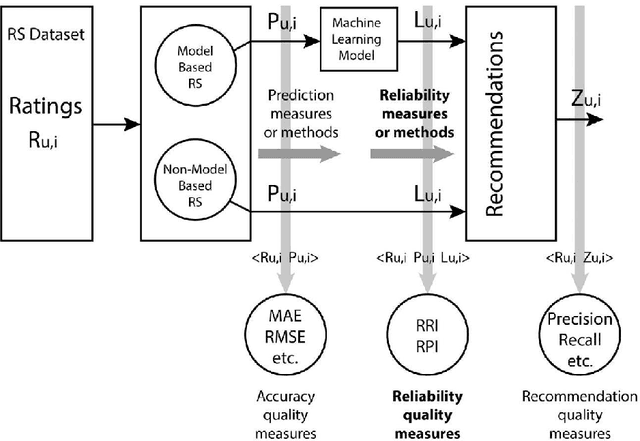

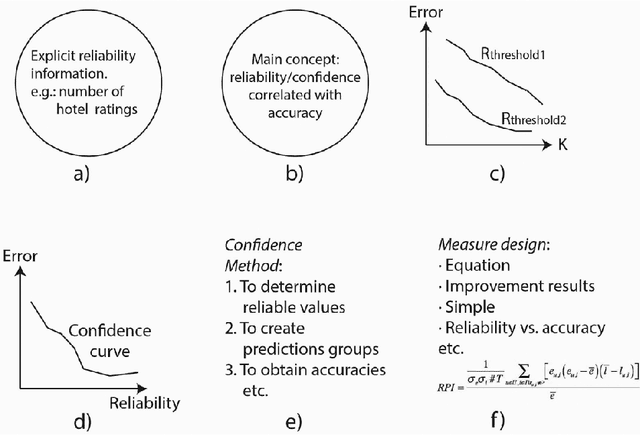

Abstract:Users want to know the reliability of the recommendations; they do not accept high predictions if there is no reliability evidence. Recommender systems should provide reliability values associated with the predictions. Research into reliability measures requires the existence of simple, plausible and universal reliability quality measures. Research into recommender system quality measures has focused on accuracy. Moreover, novelty, serendipity and diversity have been studied; nevertheless there is an important lack of research into reliability/confidence quality measures. This paper proposes a reliability quality prediction measure (RPI) and a reliability quality recommendation measure (RRI). Both quality measures are based on the hypothesis that the more suitable a reliability measure is, the better accuracy results it will provide when applied. These reliability quality measures show accuracy improvements when appropriated reliability values are associated with their predictions (i.e. high reliability values associated with correct predictions or low reliability values associated with incorrect predictions). The proposed reliability quality metrics will lead to the design of brand new recommender system reliability measures. These measures could be applied to different matrix factorization techniques and to content-based, context-aware and social recommendation approaches. The recommender system reliability measures designed could be tested, compared and improved using the proposed reliability quality metrics.
Deep Neural Aggregation for Recommending Items to Group of Users
Jul 18, 2023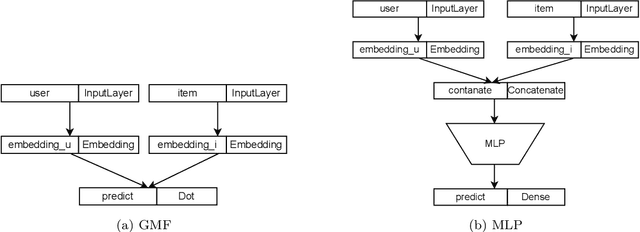



Abstract:Modern society devotes a significant amount of time to digital interaction. Many of our daily actions are carried out through digital means. This has led to the emergence of numerous Artificial Intelligence tools that assist us in various aspects of our lives. One key tool for the digital society is Recommender Systems, intelligent systems that learn from our past actions to propose new ones that align with our interests. Some of these systems have specialized in learning from the behavior of user groups to make recommendations to a group of individuals who want to perform a joint task. In this article, we analyze the current state of Group Recommender Systems and propose two new models that use emerging Deep Learning architectures. Experimental results demonstrate the improvement achieved by employing the proposed models compared to the state-of-the-art models using four different datasets. The source code of the models, as well as that of all the experiments conducted, is available in a public repository.
Neural Group Recommendation Based on a Probabilistic Semantic Aggregation
Mar 13, 2023Abstract:Recommendation to groups of users is a challenging subfield of recommendation systems. Its key concept is how and where to make the aggregation of each set of user information into an individual entity, such as a ranked recommendation list, a virtual user, or a multi-hot input vector encoding. This paper proposes an innovative strategy where aggregation is made in the multi-hot vector that feeds the neural network model. The aggregation provides a probabilistic semantic, and the resulting input vectors feed a model that is able to conveniently generalize the group recommendation from the individual predictions. Furthermore, using the proposed architecture, group recommendations can be obtained by simply feedforwarding the pre-trained model with individual ratings; that is, without the need to obtain datasets containing group of user information, and without the need of running two separate trainings (individual and group). This approach also avoids maintaining two different models to support both individual and group learning. Experiments have tested the proposed architecture using three representative collaborative filtering datasets and a series of baselines; results show suitable accuracy improvements compared to the state-of-the-art.
Creating Synthetic Datasets for Collaborative Filtering Recommender Systems using Generative Adversarial Networks
Mar 02, 2023



Abstract:Research and education in machine learning needs diverse, representative, and open datasets that contain sufficient samples to handle the necessary training, validation, and testing tasks. Currently, the Recommender Systems area includes a large number of subfields in which accuracy and beyond accuracy quality measures are continuously improved. To feed this research variety, it is necessary and convenient to reinforce the existing datasets with synthetic ones. This paper proposes a Generative Adversarial Network (GAN)-based method to generate collaborative filtering datasets in a parameterized way, by selecting their preferred number of users, items, samples, and stochastic variability. This parameterization cannot be made using regular GANs. Our GAN model is fed with dense, short, and continuous embedding representations of items and users, instead of sparse, large, and discrete vectors, to make an accurate and quick learning, compared to the traditional approach based on large and sparse input vectors. The proposed architecture includes a DeepMF model to extract the dense user and item embeddings, as well as a clustering process to convert from the dense GAN generated samples to the discrete and sparse ones, necessary to create each required synthetic dataset. The results of three different source datasets show adequate distributions and expected quality values and evolutions on the generated datasets compared to the source ones. Synthetic datasets and source codes are available to researchers.
Deep Variational Models for Collaborative Filtering-based Recommender Systems
Jul 27, 2021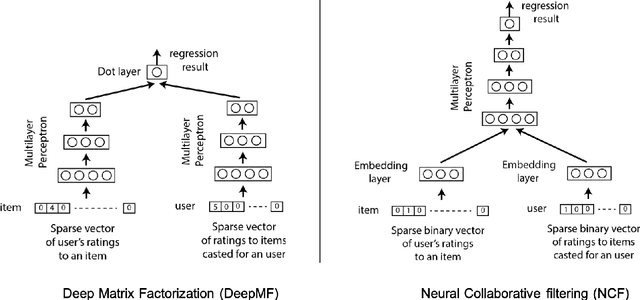

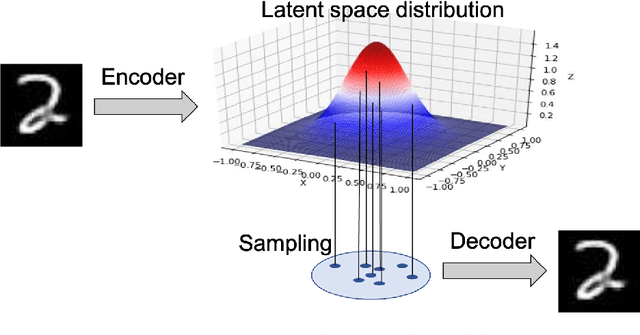
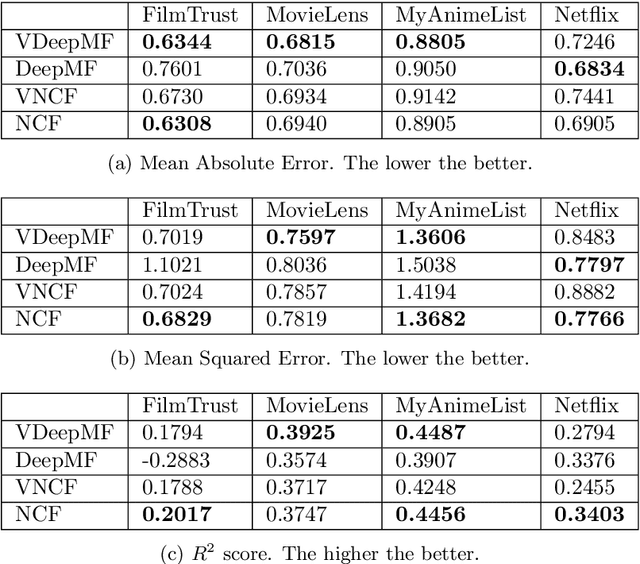
Abstract:Deep learning provides accurate collaborative filtering models to improve recommender system results. Deep matrix factorization and their related collaborative neural networks are the state-of-art in the field; nevertheless, both models lack the necessary stochasticity to create the robust, continuous, and structured latent spaces that variational autoencoders exhibit. On the other hand, data augmentation through variational autoencoder does not provide accurate results in the collaborative filtering field due to the high sparsity of recommender systems. Our proposed models apply the variational concept to inject stochasticity in the latent space of the deep architecture, introducing the variational technique in the neural collaborative filtering field. This method does not depend on the particular model used to generate the latent representation. In this way, this approach can be applied as a plugin to any current and future specific models. The proposed models have been tested using four representative open datasets, three different quality measures, and state-of-art baselines. The results show the superiority of the proposed approach in scenarios where the variational enrichment exceeds the injected noise effect. Additionally, a framework is provided to enable the reproducibility of the conducted experiments.
Deep Learning feature selection to unhide demographic recommender systems factors
Jun 17, 2020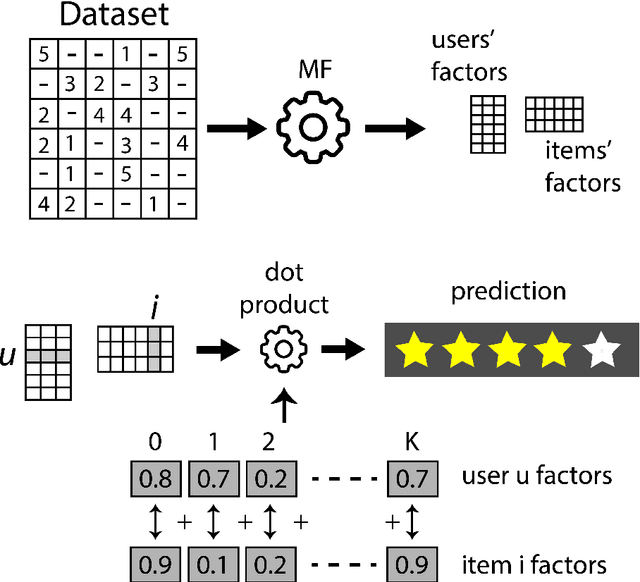

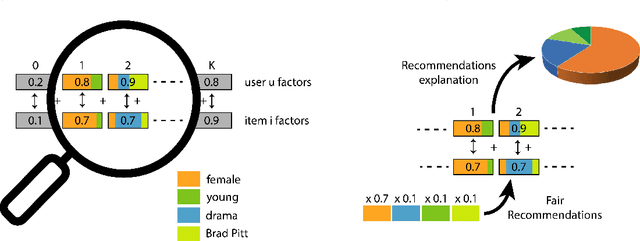
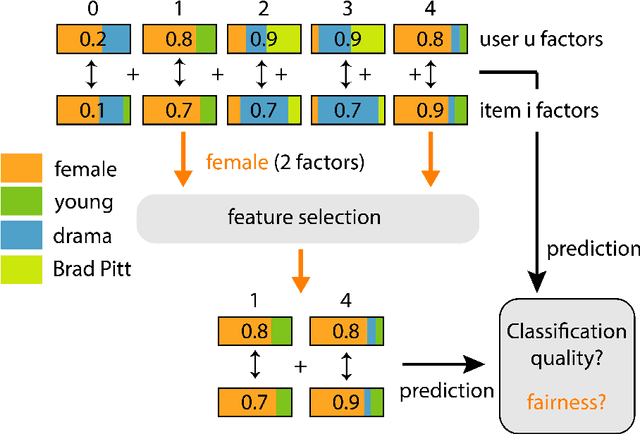
Abstract:Extracting demographic features from hidden factors is an innovative concept that provides multiple and relevant applications. The matrix factorization model generates factors which do not incorporate semantic knowledge. This paper provides a deep learning-based method: DeepUnHide, able to extract demographic information from the users and items factors in collaborative filtering recommender systems. The core of the proposed method is the gradient-based localization used in the image processing literature to highlight the representative areas of each classification class. Validation experiments make use of two public datasets and current baselines. Results show the superiority of DeepUnHide to make feature selection and demographic classification, compared to the state of art of feature selection methods. Relevant and direct applications include recommendations explanation, fairness in collaborative filtering and recommendation to groups of users.
DeepFair: Deep Learning for Improving Fairness in Recommender Systems
Jun 09, 2020



Abstract:The lack of bias management in Recommender Systems leads to minority groups receiving unfair recommendations. Moreover, the trade-off between equity and precision makes it difficult to obtain recommendations that meet both criteria. Here we propose a Deep Learning based Collaborative Filtering algorithm that provides recommendations with an optimum balance between fairness and accuracy without knowing demographic information about the users. Experimental results show that it is possible to make fair recommendations without losing a significant proportion of accuracy.
 Add to Chrome
Add to Chrome Add to Firefox
Add to Firefox Add to Edge
Add to Edge